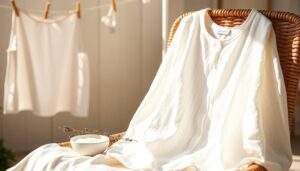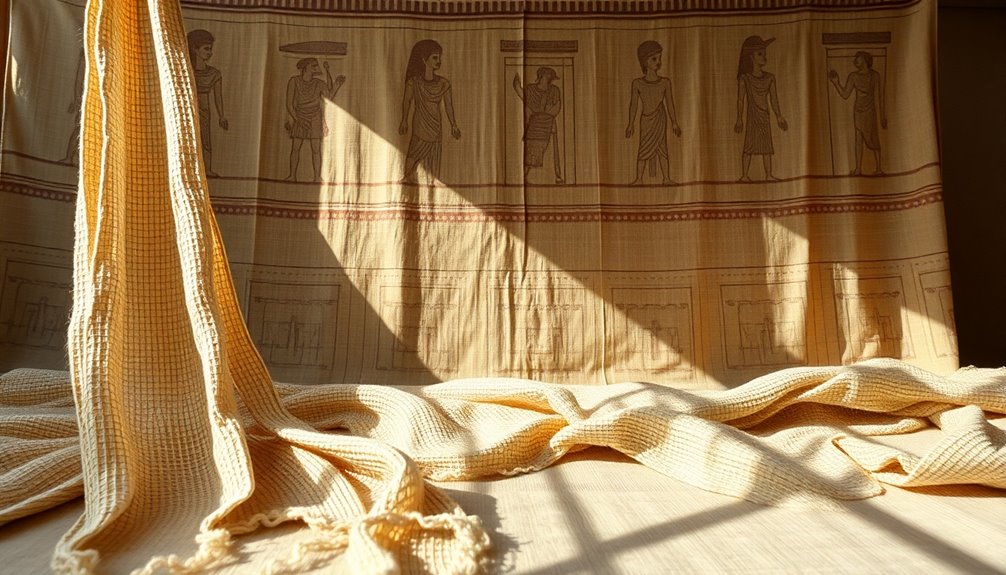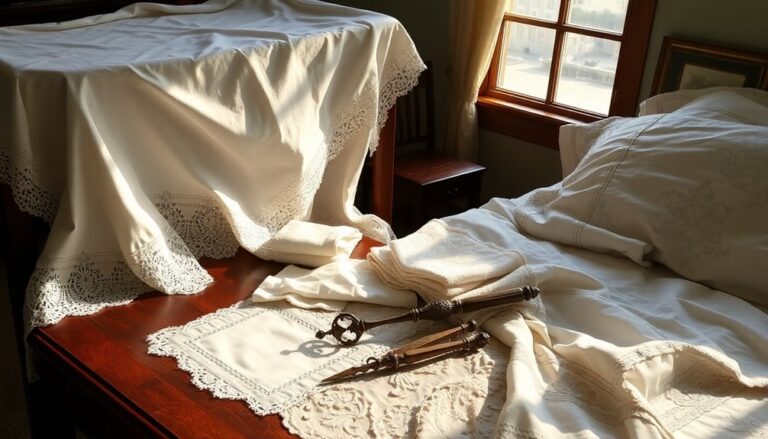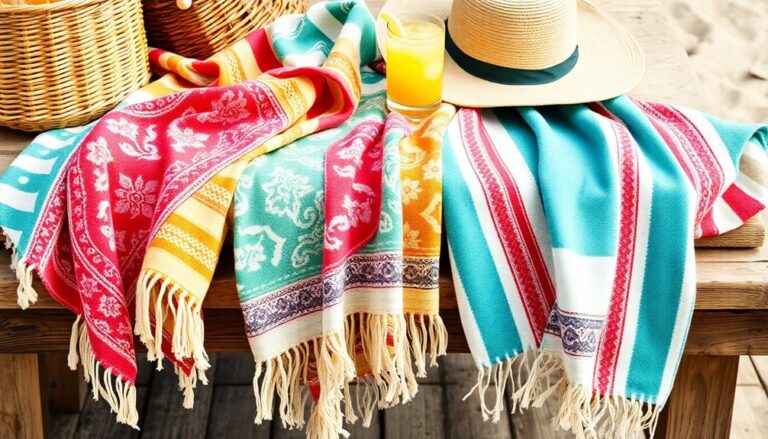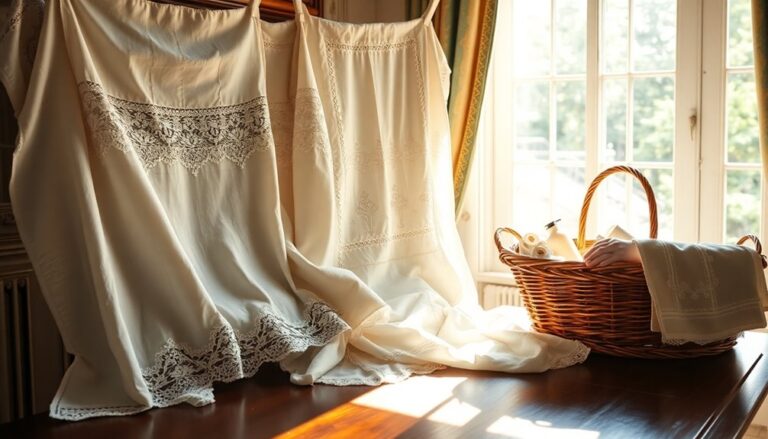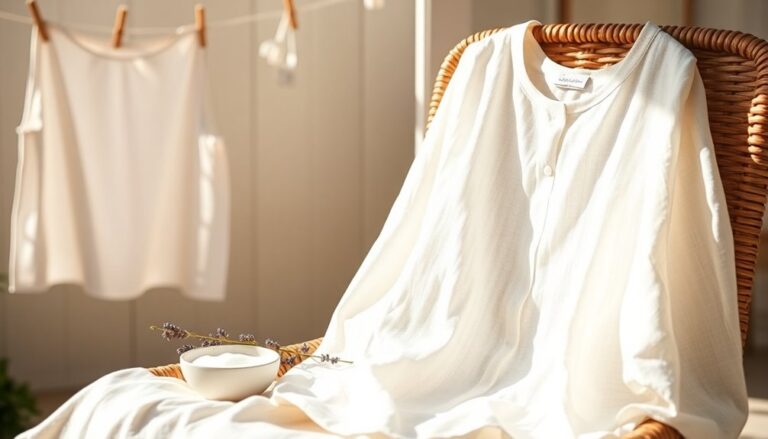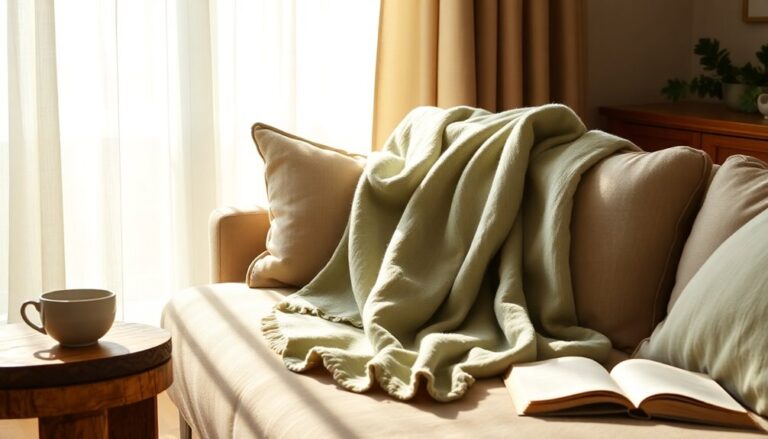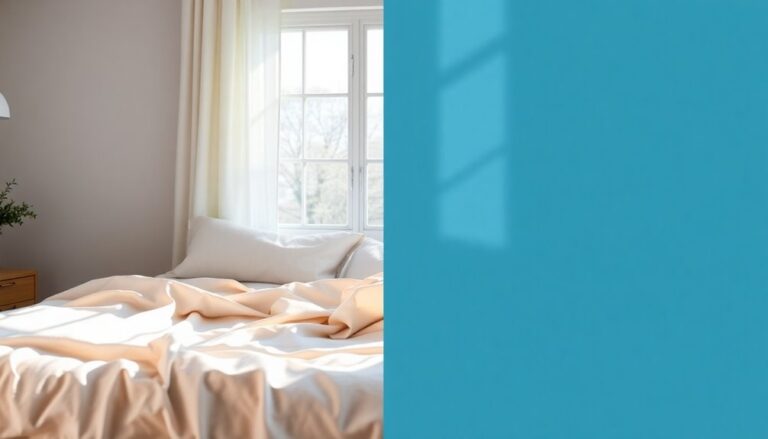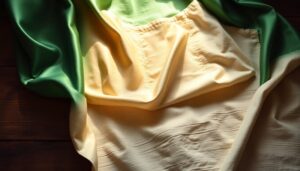Linen's history spans from ancient Egypt, where flax was cultivated around 3000 BCE, to the modern fashion scene. In classical Greece and Rome, it became a symbol of wealth, as the Medieval period distinguished social classes through linen quality. The Renaissance saw linen transform into a fashionable staple with lively colors and intricate designs. Today, linen is celebrated for its sustainability and versatility, making it a favorite in contemporary fashion. Exploring its expedition reveals even more intriguing nuances.
Article Highlights
- Linen originated in ancient Egypt around 3000 BCE, becoming essential for clothing, bed linens, and burial shrouds.
- In classical Greece and Rome, linen symbolized wealth and was favored for its lightness and suitability for warm climates.
- During the Medieval Period, linen quality indicated social status, with the wealthy wearing finer weaves compared to the common folk.
- The Renaissance saw linen become a fashionable choice, featuring intricate designs, vibrant natural dyes, and accessibility across social classes.
- Today, linen is celebrated for its sustainability and versatility, making it a favored fabric in contemporary fashion trends.
The Origins of Linen in Ancient Egypt
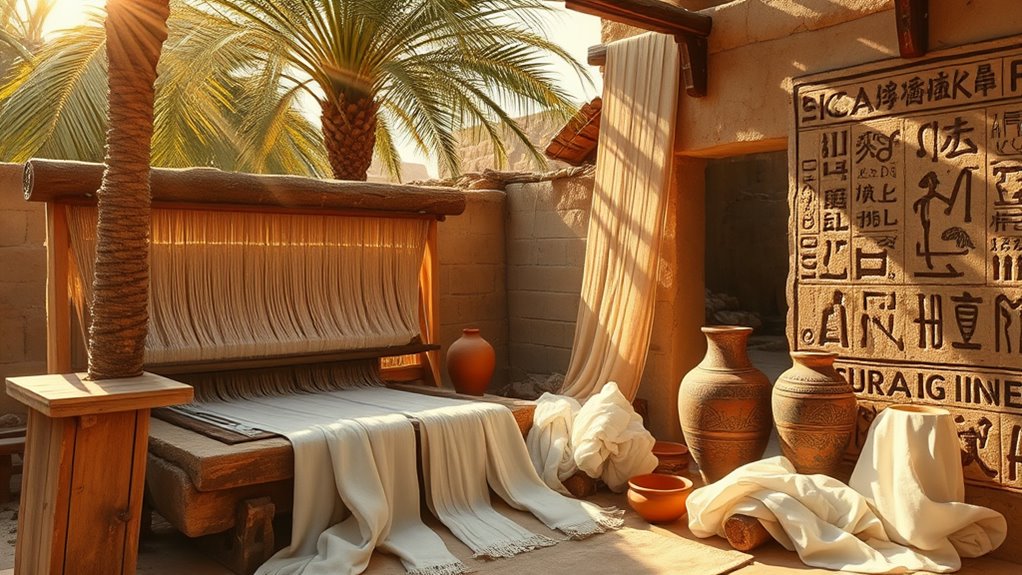
Although linen's history spans various cultures, its origins can be traced back to ancient Egypt, where the plant flax was first cultivated around 3000 BCE. Egyptians mastered the ancient production of linen, creating textiles that were both durable and breathable. This made linen a favored material for clothing, bed linens, and additionally burial shrouds, highlighting its significance in daily life and afterlife beliefs. The process involved harvesting flax, soaking the stalks, and then spinning the fibers into thread, showcasing their craftsmanship. Egyptian textiles, often adorned with intricate patterns and colors, reflected the society's values and status. The legacy of their linen production not only advanced textile technology but likewise influenced cultures far beyond their borders, leaving an enduring mark on history.
Linen in the Classical World: Greece and Rome
As the influence of ancient Egypt spread, linen became a staple in the classical world, particularly in Greece and Rome. This versatile fabric was integral to both cultures, showcasing exquisite craftsmanship and style.
- Greek textiles were celebrated for their lightness and drape, perfect for the warm climate.
- Roman garments often featured linen, reflecting wealth and status.
- Linen was used in both everyday wear and ceremonial attire.
- Its durability made it a preferred choice for various clothing types.
In Greece, linen tunics were common among citizens, whereas Romans incorporated it into togas and other formal outfits. The appreciation for linen during these times laid the groundwork for its enduring legacy in fashion and textiles.
The Medieval Period: Linen's Role in Society
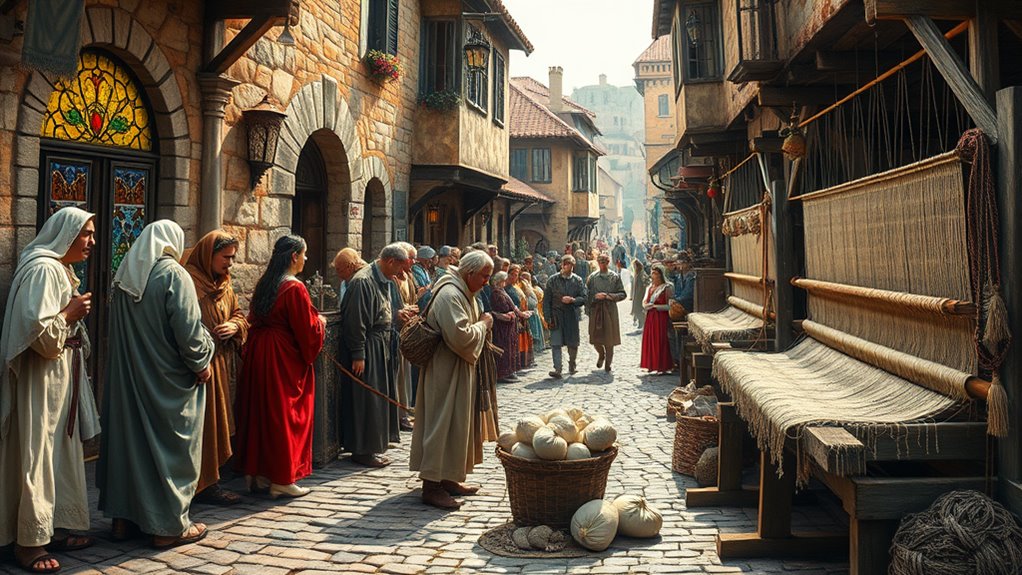
During the Medieval Period, linen played a critical role in society, not merely as a practical fabric but likewise as a symbol of social status. Its use varied greatly across different classes, reflecting the medieval economy's intricacies. The wealthy donned fine linens, showcasing their affluence, whereas common folk utilized coarser weaves. This distinction reinforced social hierarchies and influenced trade practices.
| Class | Linen Quality | Social Implications |
|---|---|---|
| Nobility | High-quality linen | Display of wealth |
| Merchants | Varied quality | Economic status |
| Peasants | Coarse linen | Basic necessities |
| Clergy | Fine linen | Religious significance |
Thus, linen was integral to both daily life and the social fabric of the medieval period.
The Renaissance and the Rise of Linen Fashion
With the onset of the Renaissance, linen evolved from a mere functional fabric to a fashionable staple, reflecting the era's emphasis on art and individual expression. This transformation marked a crucial moment in Renaissance fashion, as linen textiles became synonymous with elegance and sophistication.
Key characteristics of linen during this period included:
- Intricate designs: Artisans began creating detailed patterns.
- Vibrant colors: Natural dyes were used to improve visual appeal.
- Layering techniques: Linen was often layered with other fabrics for style.
- Affordability: Although luxurious, linen remained accessible to various social classes.
As a result, linen established itself as an essential element in the wardrobes of both the wealthy and the emerging middle class, embodying the spirit of the Renaissance.
Linen in Modern Times: Sustainability and Style
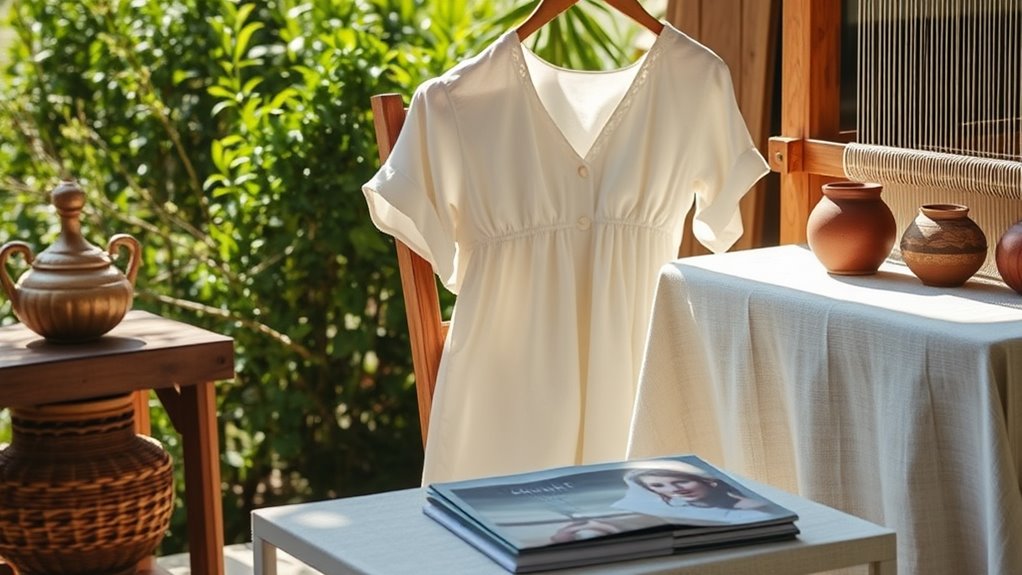
Though many fabrics have come and gone in the fashion world, linen has made a remarkable comeback in modern times, celebrated for its sustainability and style. As consumers become more conscious of their choices, sustainable practices in textile production have gained prominence. Linen, derived from the flax plant, requires fewer resources and less water than other materials, making it an eco-friendly option. Current linen trends showcase its versatility, from casual wear to high-end fashion, appealing to a wide range of tastes. Designers are embracing its natural texture and breathability, creating stylish pieces that resonate with environmentally aware shoppers. This resurgence highlights not only linen's enduring appeal but likewise its role in promoting a more sustainable and stylish future in fashion.
Frequently Asked Questions
How Does Linen Compare to Other Fabrics in Terms of Durability?
In terms of durability, linen stands out because of its impressive longevity and fabric resilience. Unlike many other fabrics, linen fibers are strong and can withstand significant wear and tear, making it a preferred choice for clothing and home textiles. Its natural breathability further helps prevent damage from moisture. Although some fabrics may fray or fade over time, linen maintains its integrity, ensuring it lasts longer with proper care, making it a worthwhile investment.
What Are the Environmental Impacts of Linen Production Today?
In the fabric of textiles, linen stands out as a lively thread woven with eco-friendly practices. Its production today embraces sustainable practices, minimizing environmental footprints. Farmers often employ eco-friendly farming techniques, which reduce chemical use and conserve water. This approach not just nurtures the land but additionally supports biodiversity. As a result, linen offers a greener alternative to many fabrics, allowing consumers to wrap themselves in comfort during caring for the planet.
Are There Any Health Benefits Associated With Wearing Linen?
When considering the health benefits of wearing linen, one finds notable linen skin benefits. This fabric's breathability helps regulate body temperature, reducing skin irritation. Moreover, it's hypoallergenic, making it suitable for those with sensitive skin. Conversely, individuals should likewise be aware of linen allergy considerations, as some might experience reactions to the fibers or dyes used. Overall, linen can be a comfortable and beneficial choice for many seeking natural clothing options.
What Are the Most Popular Linen Brands Currently?
As the sun rises over the fashion terrain, it illuminates a variety of popular linen brands that symbolize luxury and sustainability. Among them, brands like L'Occitane and Cultiver embody the essence of luxury linen during prioritizing eco-friendly practices. These sustainable brands not just provide exquisite fabrics but likewise reflect a commitment to the environment. For those seeking both style and conscience, these names shine brightly in the current linen market.
How Can I Best Care for My Linen Garments?
To best care for linen garments, one should follow proper washing techniques. It's advisable to wash in cold water using a gentle cycle to prevent shrinkage. Regarding drying, air drying is preferred. For ironing, linen's prone to wrinkling, so it's best to iron in a slightly damp state. Using a medium-hot iron can help achieve a smooth finish. Following these tips guarantees the longevity and beauty of linen clothing.

